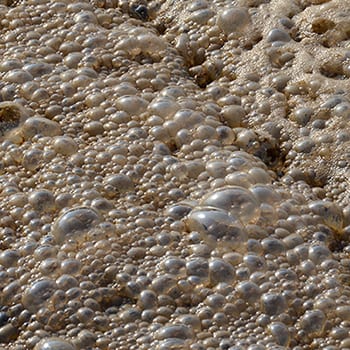What are Defoamers and How Do They Work?
Defoamers are chemical additives that are used to control or eliminate foam in industrial processes. Foam is a dispersion of gas bubbles in a liquid, and it can be a problem in a variety of industries, including:
- Chemical processing: Foam can interfere with mixing, heat transfer, and product quality.
- Petroleum refining: Foam can cause leaks and safety hazards.
- Food processing: Foam can contaminate food products and make them difficult to package.
- Papermaking: Foam can clog paper machines and reduce production output.
Defoamers work by breaking down the foam bubbles or preventing them from forming in the first place. There are two main types of defoamers:
- Antifoaming agents: Antifoaming agents are added to a system before foam forms. They work by coating the surfaces of the liquid and making it difficult for gas bubbles to form.
- Defoamers: Defoamers are added to a system after foam has formed. They work by breaking down the foam bubbles and causing them to collapse.
Defoamers are typically made of a combination of different chemicals, including:
- Silicones: Silicones are a type of polymer that is very hydrophobic, meaning it does not like water. This makes them effective at coating surfaces and preventing gas bubbles from forming.
- Mineral oils: Mineral oils are also hydrophobic and can be used to coat surfaces and prevent foam formation.
- Hydrophobic solids: Hydrophobic solids, such as silica and alumina, can be added to defoamers to help them break down foam bubbles.
The type of defoamer that is used will depend on the specific application. For example, defoamers that are used in food processing must be food-grade and non-toxic.
Defoamers are an important part of many industrial processes. They help to prevent foam formation and control foam that has already formed. This can improve productivity, safety, and product quality.
Here are some additional tips for using defoamers:
- Use the right defoamer for the application. There are many different types of defoamers available, so it is important to choose the right one for the specific application.
- Add the defoamer at the right time. Defoamers should be added to the system before or after foam forms, depending on the type of defoamer that is being used.
- Use the correct dosage. The amount of defoamer that is needed will vary depending on the application. It is important to follow the manufacturer’s instructions carefully.
- Monitor the system. It is important to monitor the system after defoamer has been added to ensure that the foam is being controlled. If the foam is not being controlled, it may be necessary to increase the dosage of defoamer or use a different type of defoamer.
By following these tips, you can ensure that defoamers are used effectively and safely.

